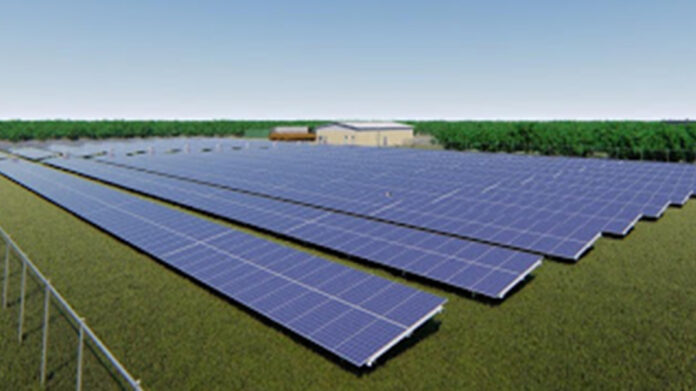
A newly-built solar farm on the sister isle is already showing signs of promise – according to Barbuda Council Chairman, Mackenzie Frank.
The solar farm is part of a state-of-the-art hybrid energy system – a collaboration between the government and its United Arab Emirates (UAE) counterpart – intended to reduce Barbuda’s dependence on fossil fuels and boost its resilience, especially during and after periods of extreme weather activity.
And despite what could be considered a late start, Frank said the early signs are looking good.
“I live very close to it; I am about 800 meters away from the site which is on Two-Foot Bay Road, and I think for the last two months there has been trials being undertaken by APUA [Antigua Public Utilities Authority] and so far, so good, where that farm is concerned.
“Electricity is being more stable and the people are very pleased that we are making this type of progress,” Frank said.
This is welcomed news for Barbudans who have been struggling with inadequate electrical services since the passage of Hurricane Irma in 2017.
The move is also a major step towards the “Green Barbuda” tagline that the government has been pushing.
An official opening was set to take place last weekend, but it was postponed due to the passage of Tropical Storm Fiona.
A new date was not given by Frank but he did thank the central government for its efforts in getting the project off the ground while speaking on the Observer AM radio show yesterday.
The project is said to be the largest and most innovative of its type funded by the UAE, through its Caribbean Renewable Energy Fund and the fund’s executing arm, Masdar.
It aims to build a modern, climate-resilient, safe, reliable and sustainable supply of electrical power for Barbuda in the wake of Hurricane Irma, which destroyed 95 percent of the island’s buildings on September 6 2017, and forced all 1,800 residents to be temporarily evacuated to Antigua.
Frank noted that it is particularly pleasing to see it come to fruition, as a proposal was made for a similar project nearly 30 years ago.
“It was something that we proposed in the mid ‘90s after the passage of Hurricane Luis and we got a student from De Montfort University in Leicester to come and do a study and we had submitted that to APUA many moons ago,” he recalled.
“I think the current minister, Mr Yearwood, was in power at that time, but we had a full study done and all the recommendations were made and it was a toss-up between wind turbines and solar and obviously solar has won and we are reaping the benefits,” Frank added.
The project reportedly continued through much of the pandemic, and the total cost was previously tagged at US$5.6 million.
US$4 million of that was said to be provided as a grant by the UAE, with US$1 million coming from the government of Antigua and Barbuda, and US$500,000 from the government of New Zealand.
The plant will displace an estimated 260,000 litres of diesel fuel per year, thus saving the government of Antigua and Barbuda $320,000 and offsetting 690 tonnes of carbon dioxide annually.
